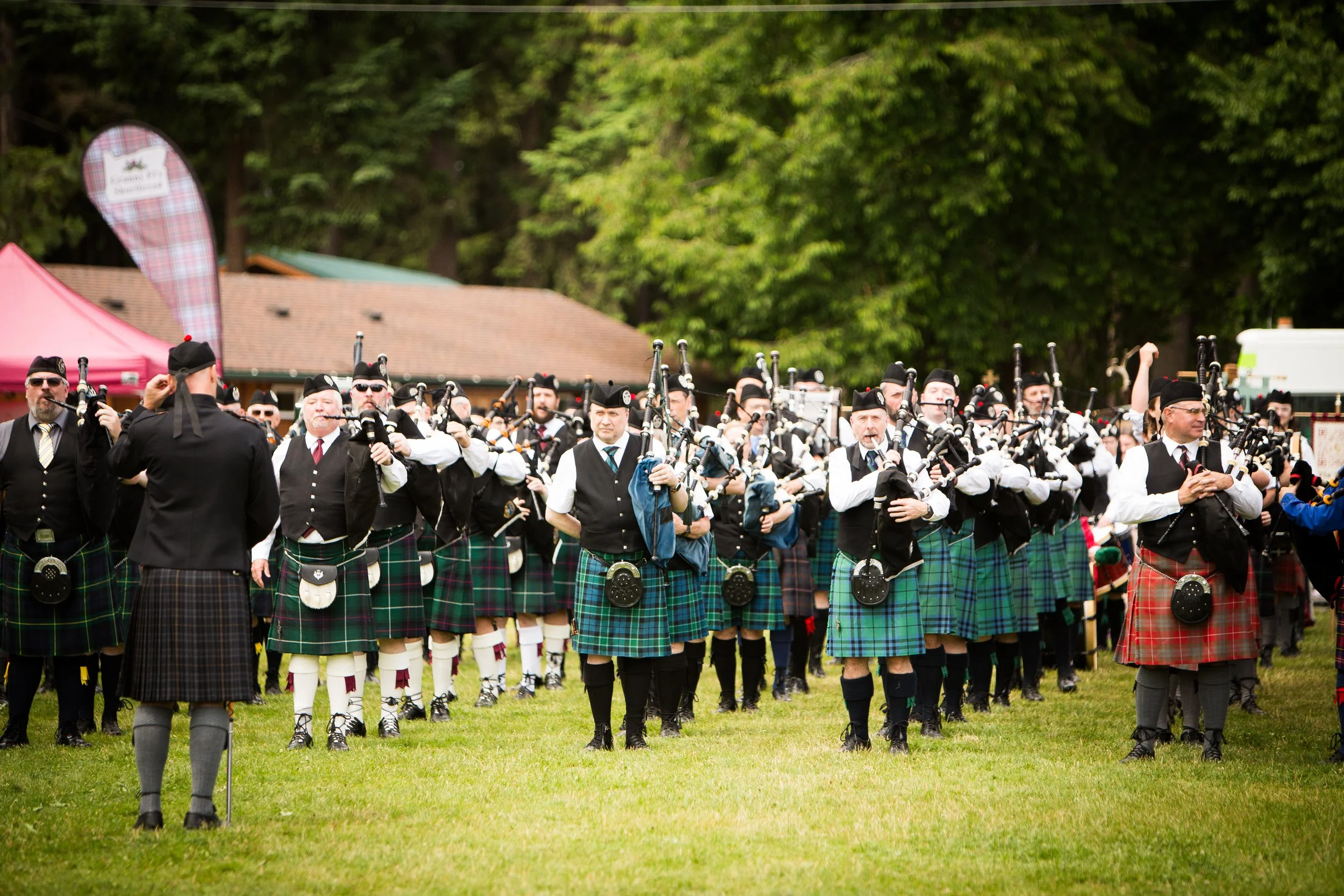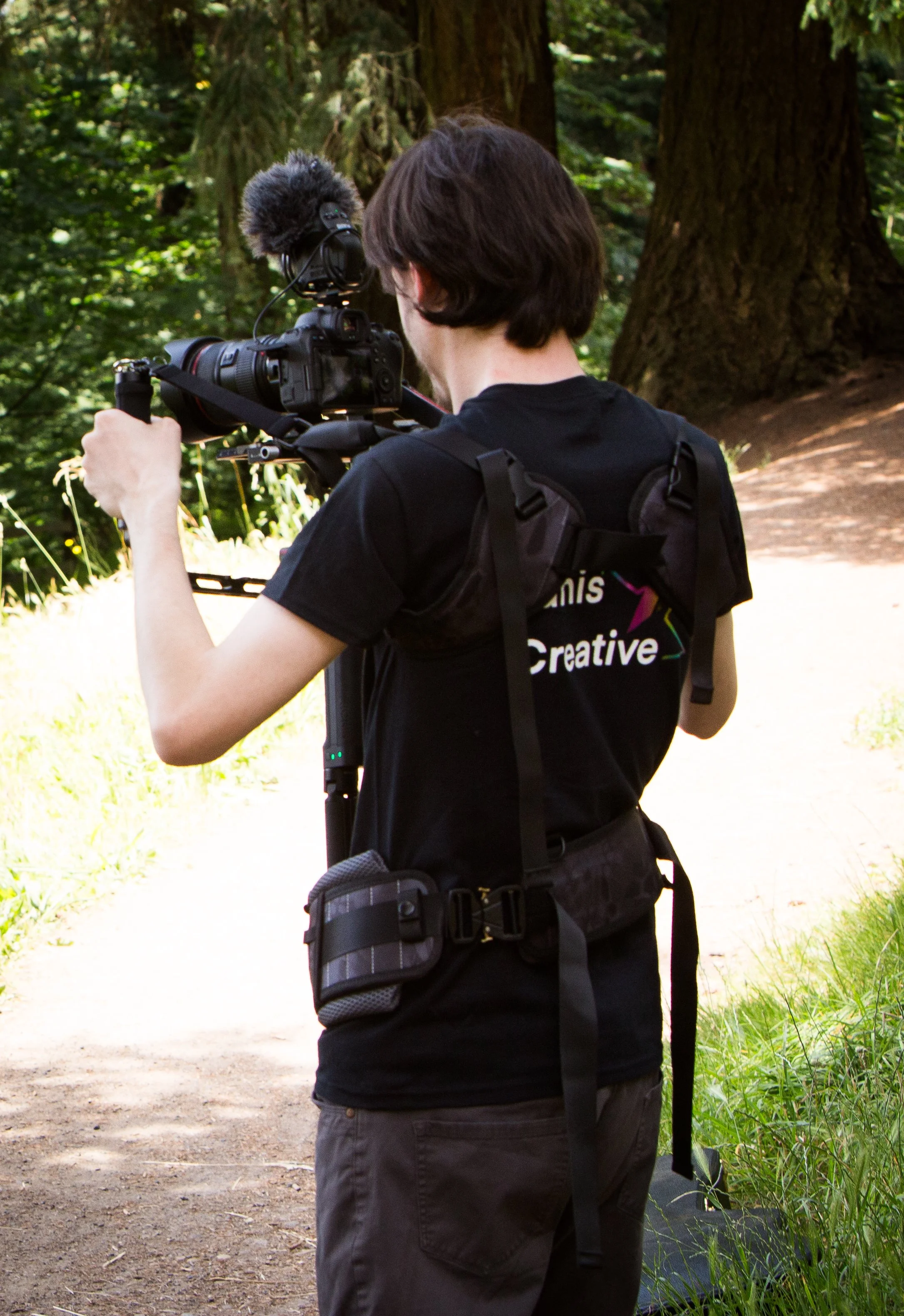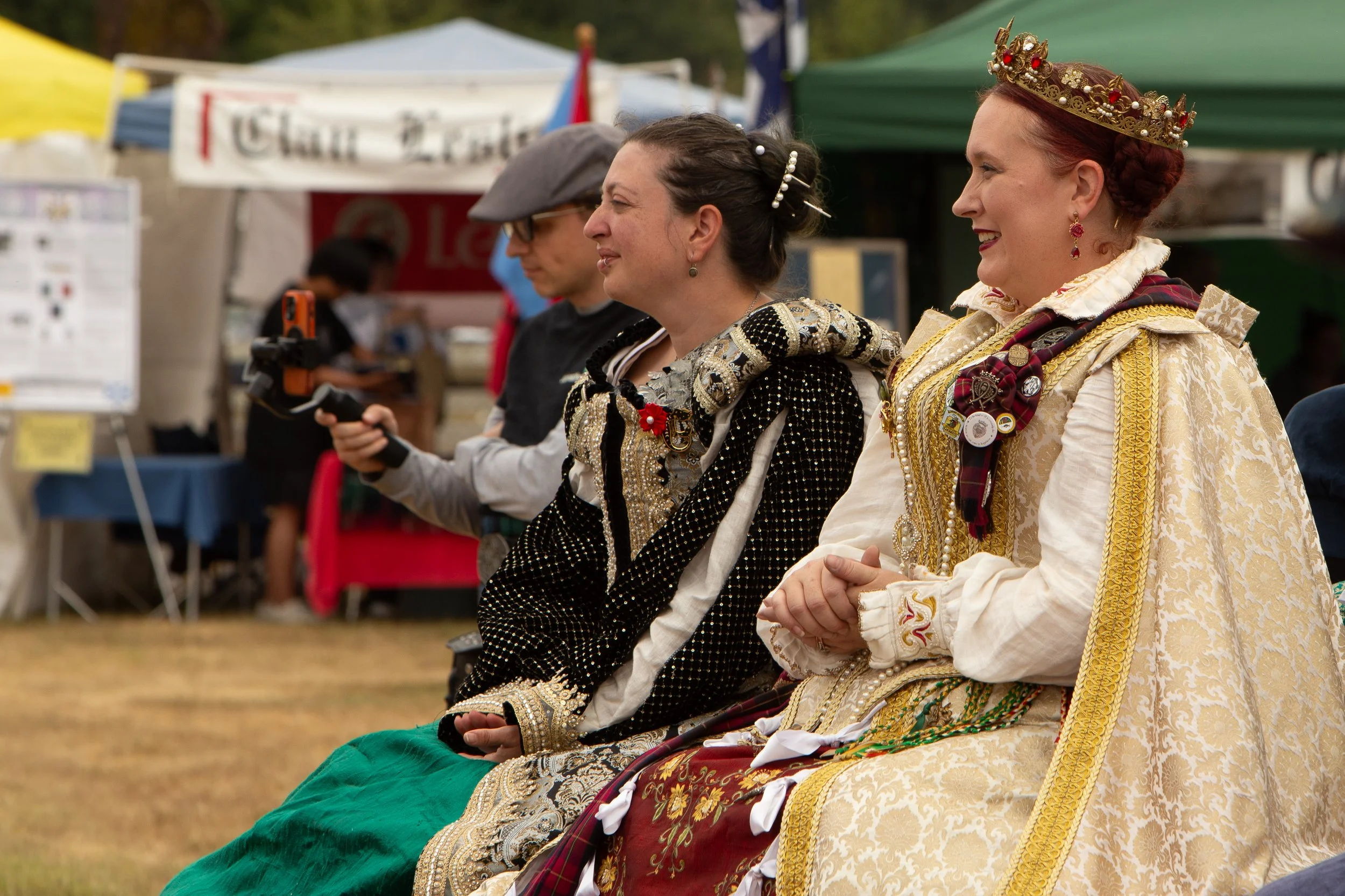Behind the Scenes: Filming Celtic Festivals
The Magic of Live Music
Opening Ceremony to a Scottish Highland Games
There’s nothing quite like the energy of live music: the soaring notes of a fiddle, the heartbeat rhythm of a drum, the audience clapping in sync. At Stanis Creative, we’ve had the privilege of capturing that magic at Celtic festivals across the Pacific Northwest. What started with an invitation from the Katie Jane Band, led by the incredible fiddler Katie Jane, has grown into one of our favorite creative adventures.
Before filming, we had no idea how rich and abundant these festivals were. The Highland Games aren’t just about athletic feats; they’re celebrations of heritage. Everywhere you turn, pipe bands are marching, Highland dancers leaping, vendors proudly displaying their crafts, athletes throwing cabers, and clans gathering to honor tradition. Even the food is part of the story: traditional Scottish eggs, meat pies, caramelized puffy Cheetos, shortbread, kettle corn, and crispy tots. The atmosphere is immersive, joyful, and deeply rooted in culture.
Why Film Celtic Festivals?
For us, it started with connection. Our friendship with Katie Jane opened a door, and once inside, we were swept up in the sights and sounds of a world we hadn’t known existed. We quickly realized that filming these festivals wasn’t just about creating content—it was about preserving culture, capturing emotion, and sharing experiences with people who may never have the chance to attend in person.
The Challenges of Filming Live Festivals
Like any live event, Celtic festivals come with their fair share of curveballs.
Taylor Stanis using an upper body Gimbal.
Packing gear for the road was its own adventure. We found ourselves staring at stacks of cases, wondering what deserved precious cargo space. In the beginning, we always erred on the side of overpacking. Still, there were moments when a piece of equipment stayed buried in a case all weekend—valuable lessons in what truly earns its keep.
Once on site, the sun became both our friend and our foe. Cameras overheated, batteries drained faster than expected, and lighting was unpredictable. Performers were often shaded under tents or pavilions, while the background blazed with daylight. Choosing between properly exposed performers and a blown-out backdrop felt like a no-win scenario at times.
And then there was the audio. Festivals are noisy, and more than once, the sound of a booming grandstand completely drowned out an interview with a vendor. At another festival, a glitch in our setup forced us to troubleshoot on the fly. Nothing makes you sweat faster than a blinking error light with the cameras rolling.
Finally, back at the editing desk, the mountain of footage revealed another challenge altogether: keeping track of hours of video and photos from multiple cameras, plus social clips shot on phones. It was exhilarating and exhausting.
The wins that made it worthwhile
For all the challenges, the rewards were unforgettable.
We’ll never forget the moment Mary Queen of Scots and her court stepped into the crowd, dancing to the fiery fiddle of Katie Jane. The camera caught the delight of a lady-in-waiting twirling with abandon, her skirts flying as the music soared. Another highlight was a couple who performed a choreographed Scottish dance, their joy radiating as the audience clapped along.
The Mary Queen of Scots watching the Katie Jane Band performance.
Multiple cameras gave us the freedom to capture these moments from different perspectives. Our gimbals smoothed our movements as we wove through crowds, giving the footage a polished, immersive feel. And because we were embedded with the musicians, we gained behind-the-scenes access, glimpses of tuning bows, whispered pep talks, and laughter backstage, which make the final edits more personal and alive.
Lessons we Learned along the way
Every festival became a classroom.
We learned quickly that no amount of planning could guarantee perfection, but planning gave us the confidence to adapt when things inevitably went wrong. When our audio setup failed, it was frustrating, but our preparation meant we had backups ready and could salvage the moment.
Our “everything bag” also became legendary. What started as a joke—a tote stuffed with clamps, tape, scissors, rubber bands, even vinegar—proved its worth time and again. It turned out that a single rubber band or clamp could save an entire shoot.
We also discovered the value of truly knowing our gear. Running checks well before the festival began helped us catch problems early. Just as important was knowing what mattered to the performers. By talking with the musicians ahead of time, we learned which solos or interactions they cared about most. Capturing those moments made our work more meaningful, not just technically sharp but emotionally resonant.
And perhaps the hardest lesson: accepting imperfection. There were times when the light washed out a shot, when the crowd blocked our view, when a magical moment slipped away. At first, those misses felt discouraging. But over time, we realized that chasing perfection misses the point. Instead, we celebrated what we did capture—moments of joy, connection, and heritage that no camera could fully script.
Tips for Filming Live Music
If you’re looking to film live music, here are a few things our journey has taught us:
Scout the venue ahead of time.
Bring backups of everything (batteries, cards, mics).
Capture multiple perspectives to tell a fuller story.
Prioritize audio—it makes or breaks the footage.
Stay mobile with gimbals or handheld rigs.
Film the context (vendors, food, dancers, crowd reactions).
Why It Matters
Filming Celtic festivals isn’t just about creating a highlight reel. It’s about preserving culture, celebrating heritage, and building bridges. These festivals bring people together through music, food, and tradition, and filming them helps extend that community beyond the festival grounds.
We hope that our work not only gives festival-goers lasting memories but also introduces others to a rich cultural experience they might not have known existed. In a world where people are often divided, capturing and sharing moments of joy, heritage, and togetherness feels like a small but meaningful way to build community.
For us, filming live performances has become more than a creative challenge. It’s a way to celebrate culture, connect people, and tell stories that continue long after the music fades.
Jonathan Stanis between sets at the Pacific Northwest Highland Games.




